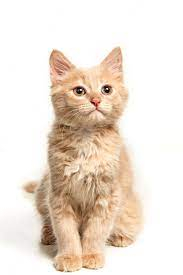Cats have long captivated humans with their enigmatic behavior and mysterious communication. As cherished pets and independent beings, they continue to intrigue and amuse us with their unique traits. Cats commuicate through their body language, vocalizations, and other non-verbal cues that reveal their thoughts and emotions. Understanding feline behavior not only deepens the bond between cat owners and their furry companions but also enhances the overall well-being of these fascinating creatures.
- The Language of Tail Tales: The tail is an essential tool in a cat's communication repertoire. Paying attention to their tail movements can provide valuable insights into their mood and intentions. A twitching tail can indicate excitement or curiosity, while a puffed-up tail indicates fear or agitation. A gently swaying tail suggests contentment, while a wagging tail signals annoyance or irritation. Understanding these tail tales helps cat owners respond appropriately to their furry friends' emotional states.
- Purr-fect Communication: The Art of Purring: Purring is one of the most recognizable vocalizations of cats and serves multiple purposes. Cats purr not only when they are content and relaxed but also when they are in pain or distress. This suggests that purring is a self-soothing mechanism. Additionally, mother cats purr to communicate with their kittens, indicating a sense of comfort and security.
- Cat-versations through Meows: Meowing is primarily reserved for communication with humans, as adult cats do not typically meow at each other. Cats use different types of meows to express their needs and desires. For instance, a short and high-pitched meow may signify a greeting or a request for attention, while a long and low meow may indicate hunger or displeasure. Learning to interpret these meows enables cat owners to respond appropriately to their feline companions.
- Whiskers: A Window into Emotions: Whiskers, or vibrissae, play a crucial role in a cat's sensory perception. They are highly sensitive and help cats navigate their environment, especially in the dark. When a cat's whiskers are forward and alert, it indicates curiosity and engagement. Conversely, flattened whiskers may signal fear or aggression. Observing their whisker positions can provide valuable clues about their emotional state.
- Slow Blinking: The Cat "I Love You": A slow blink from a cat is often considered a sign of trust and affection. When a cat gives you a slow blink, they are expressing their comfort and acceptance. Returning the slow blink is akin to telling your cat "I love you" in their language.
- Kneading: The Nostalgic Behavior: Kneading, also known as "making biscuits," is a behavior that cats carry over from kittenhood. It involves rhythmic motions of the paws against a soft surface. Cats often knead when they feel relaxed and content, as it harkens back to their days as nursing kittens. This behavior is a sign of trust and emotional attachment to their owners.
As cat owners, understanding the language of cat behavior and communication is essential in fostering a strong and harmonious relationship with our feline friends. By paying attention to their tail tales, purring, meows, whisker positions, slow blinks, and kneading, we can gain valuable insights into their emotions and needs. As we decode the fascinating world of feline communication, we strengthen the bond between humans and cats, creating a truly purr-fect companionship.
